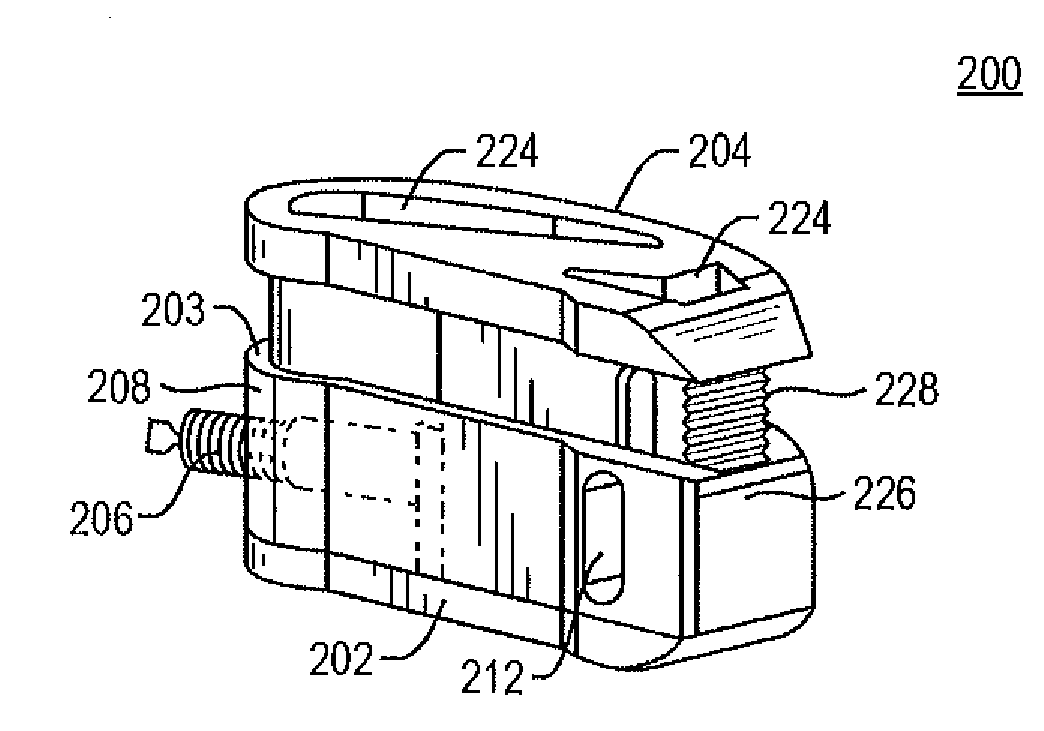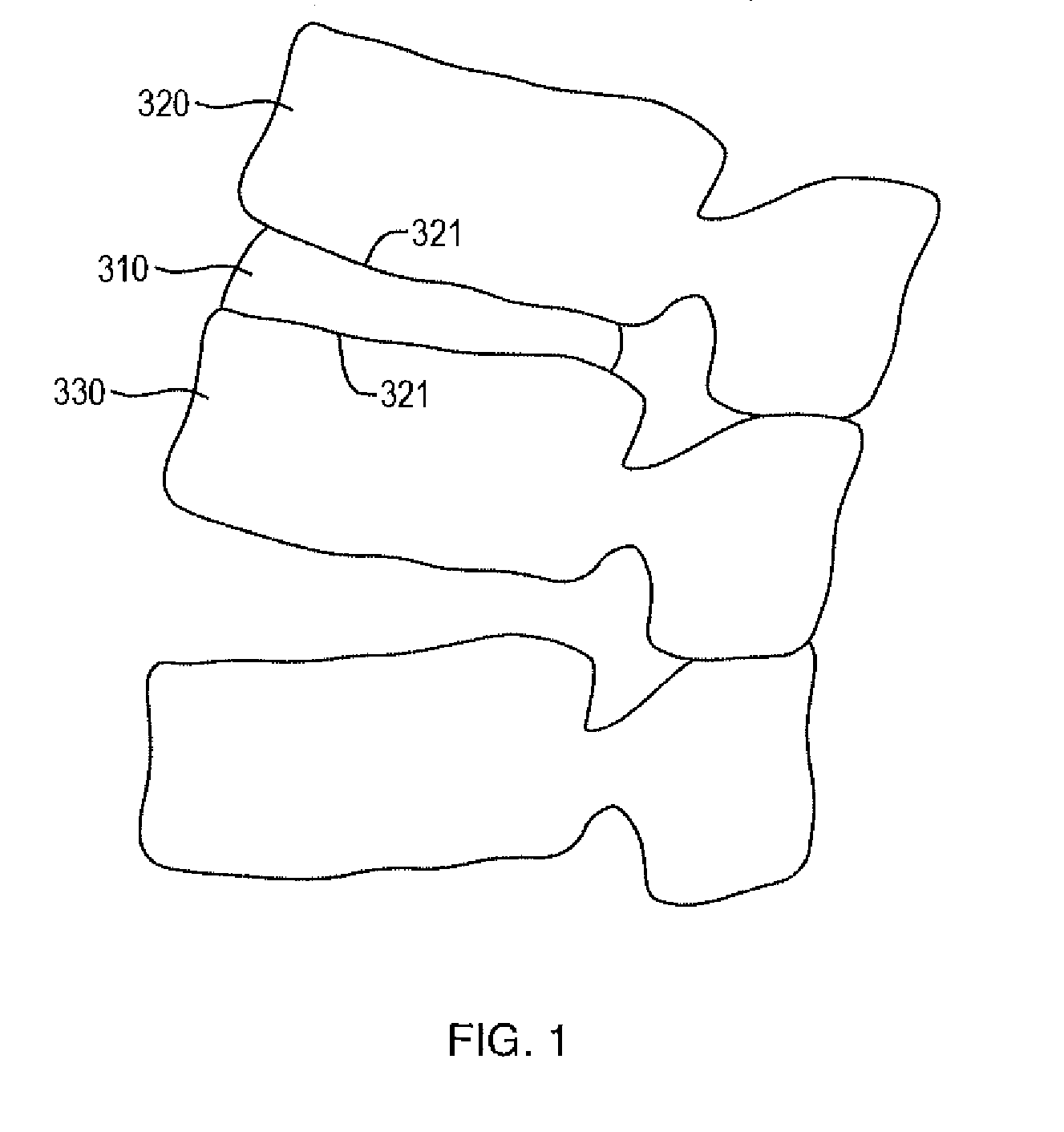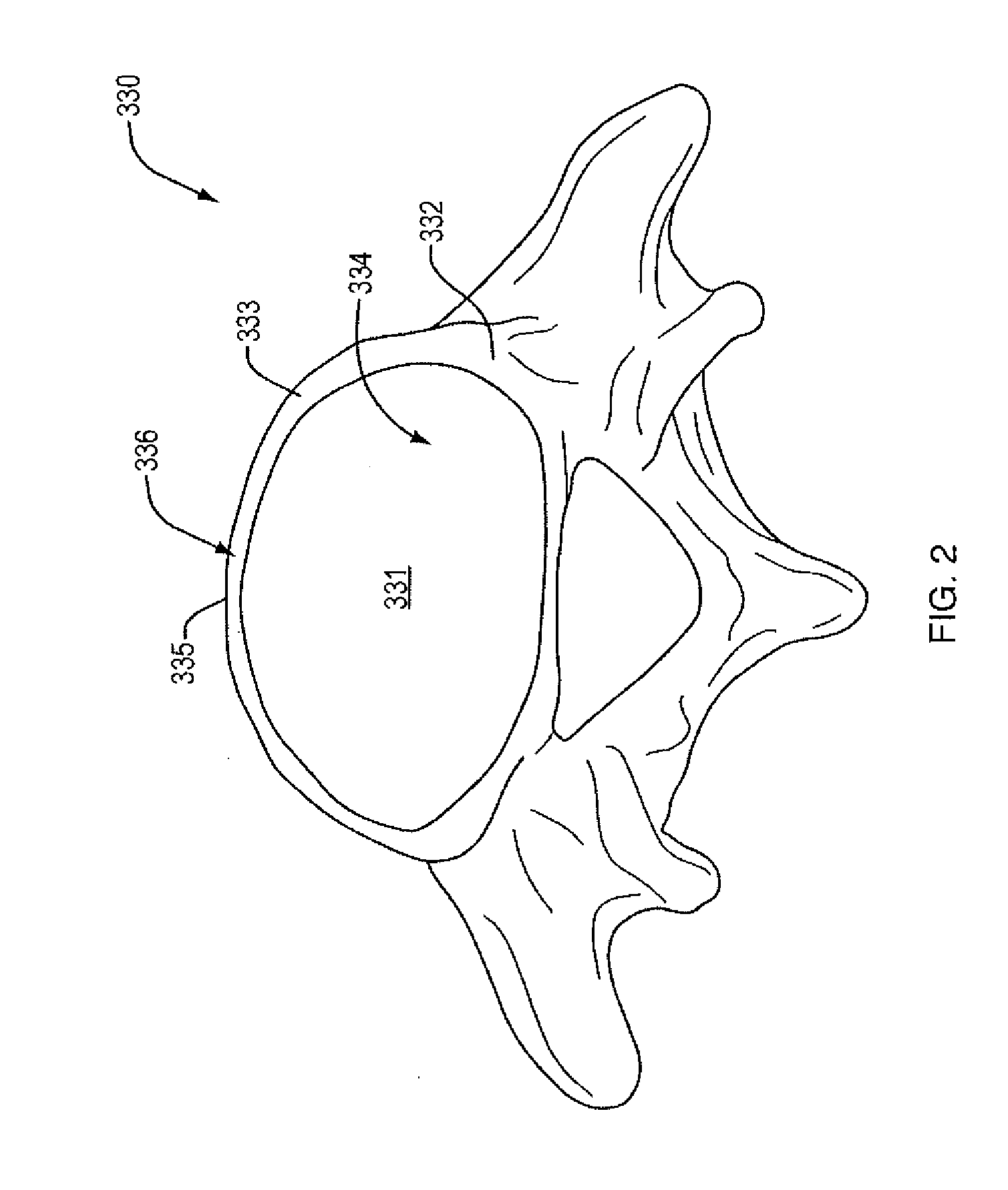Expandable spinal implant apparatus and method of use
a spinal implant and expandable technology, applied in the field of expandable spinal implant apparatus, can solve the problems of thinning of the disc, abnormal movement, and positioning the device in this way not to promote lordosis, and achieve the effects of reducing patient risk, speeding up recovery, and improving success rates
- Summary
- Abstract
- Description
- Claims
- Application Information
AI Technical Summary
Benefits of technology
Problems solved by technology
Method used
Image
Examples
first embodiment
[0049]an expandable spacer 10 of the present invention is shown in FIGS. 4-11. The spacer 10 is shown in FIGS. 4, 6 and 8 prior to expansion, and in FIGS. 5, 7 and 9 in an expanded state. It is to be noted that while the spacer 10 is shown in FIGS. 4-11 in a substantially rectangular shape with a generally curved forward portion, the expandable apparatus of the present invention may come in a range of shapes and sizes. The surgeon may choose a particular spacer size and shape suitable for a given application. The spacer 10 of the present invention is directed to the structural configuration thereof that enables the surgeon to expand the height dimension without any resulting rocking, tilting, slipping, or canting of the spacer 10. The spacer 10 may include one or more on-axis and / or one or more off-axis positioning interface sites. Spacer size, shape and positioning interface site options and examples are described in the present applicant's previously filed provisional application ...
second embodiment
[0061]an expandable spacer 100 depicting this configuration is shown in FIGS. 12-15, wherein elements corresponding to like elements of the expandable spacer 10 have the same identifying numbers. The expandable spacer 100 includes a base component 102, a top component 104 and a height adjuster 106. The base component 102 includes a receiver 108 with dimensions and shape suitable to receive and removably retain the top component 104 there. That is, the external dimensions of the top component 104 are less than the internal dimensions of the receiver 108 of the base component 102. The receiver 108 of the base component 102 further includes a height adjuster port 110, a height adjuster slot 112 and an interior perimeter wall 114. The base component 102 also includes one or more base packing ports 116 extending entirely therethrough at least in the receiver 108 area but not limited thereto. The base component 102 and the top component 104 are configured so that top surface 105 of the to...
third embodiment
[0069]an expandable spacer 200 is shown in FIGS. 18-23, wherein elements corresponding to like elements of the expandable spacer 10 have the same identifying numbers. The expandable spacer 200 includes a base component 202, a top component 204 and a height adjuster 206. The base component 202 includes a receiver 208 with dimensions and shape suitable to receive and removably retain a portion of the top component 204 there. That is, a portion of the external dimensions of the top component 204 are less than the internal dimensions of the receiver 208 of the base component 202. The top component 204 has a cap 210 that does not fit within the internal dimensions of the receiver 208 (see FIG. 19), and extends over the base component 202. The cap 210 of the top component 204 ends in two beveled surfaces on the opposite end of the spacer 200 from the height adjuster 206. In this embodiment the cap 210 sits on top of the base component 202 over the entire perimeter thereof. However, it is ...
PUM
 Login to View More
Login to View More Abstract
Description
Claims
Application Information
 Login to View More
Login to View More - R&D
- Intellectual Property
- Life Sciences
- Materials
- Tech Scout
- Unparalleled Data Quality
- Higher Quality Content
- 60% Fewer Hallucinations
Browse by: Latest US Patents, China's latest patents, Technical Efficacy Thesaurus, Application Domain, Technology Topic, Popular Technical Reports.
© 2025 PatSnap. All rights reserved.Legal|Privacy policy|Modern Slavery Act Transparency Statement|Sitemap|About US| Contact US: help@patsnap.com



